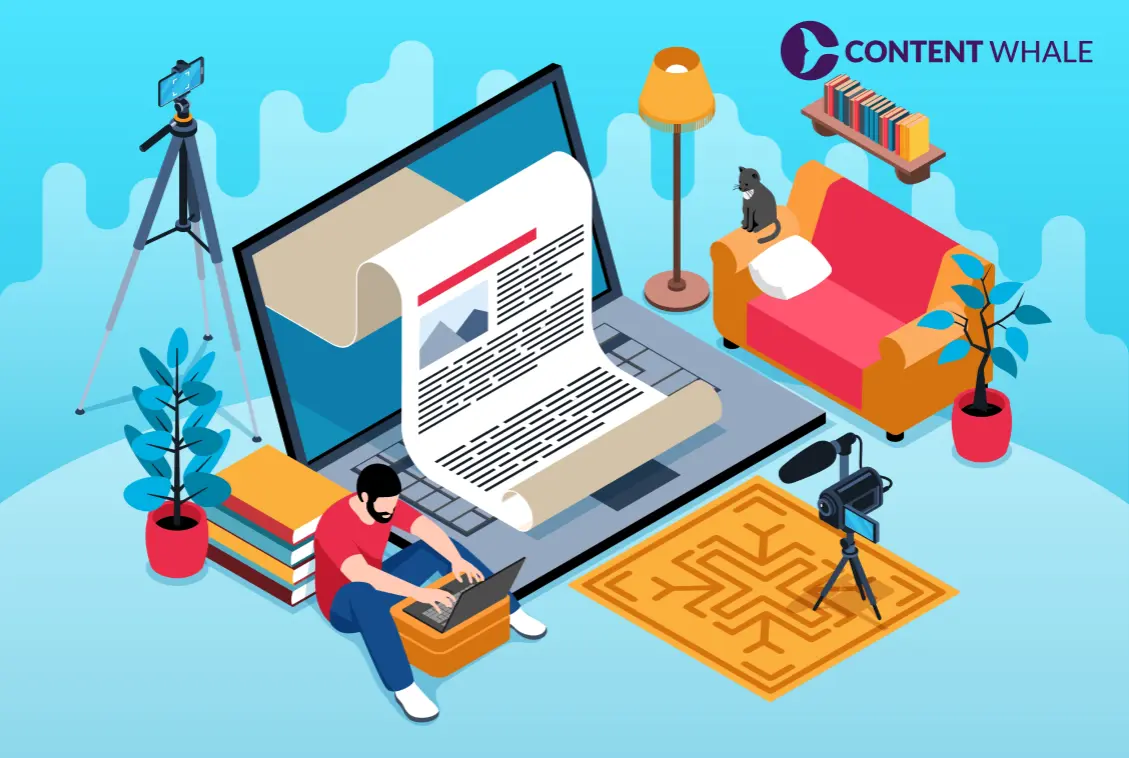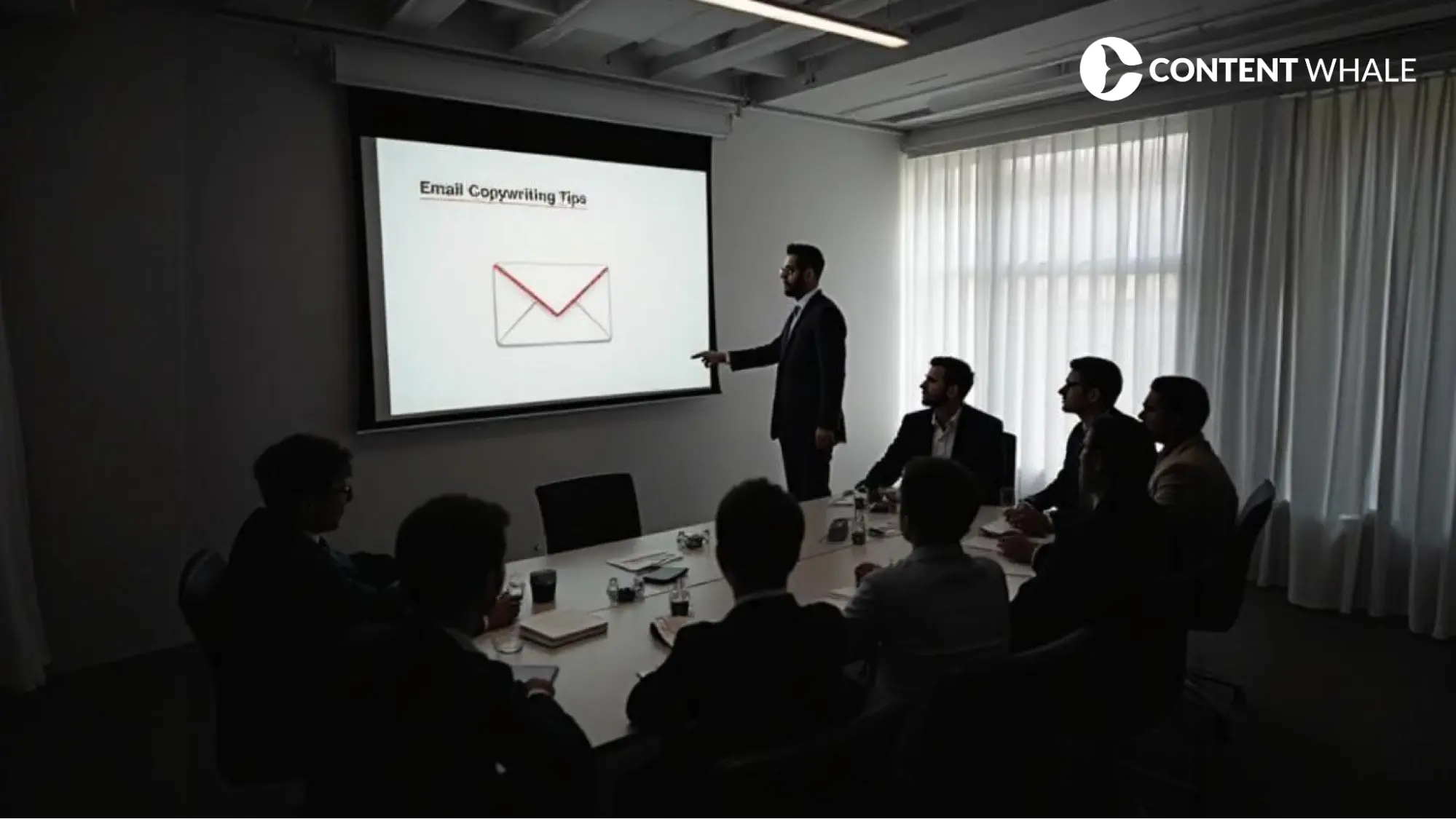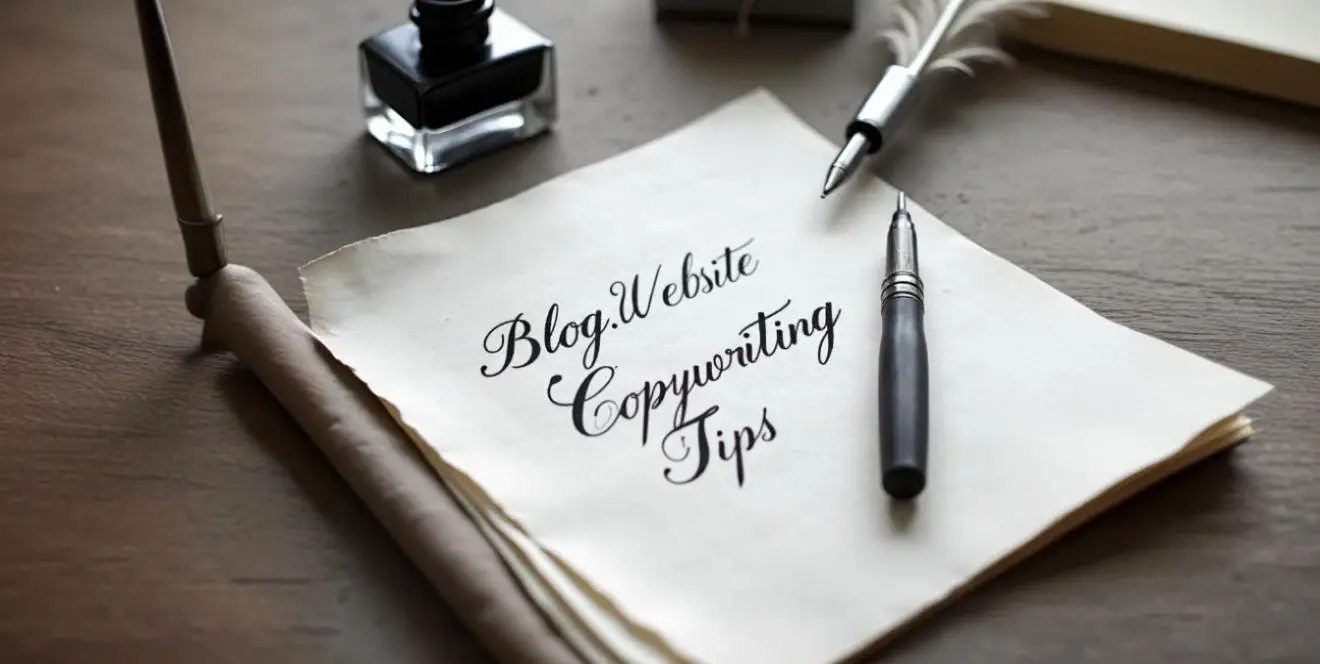Attention is expensive in 2025. Blogs don’t get read, emails don’t get opened, and websites don’t convert unless the content copy is doing real work. Most people still treat writing as filler, not strategy. That’s the gap.
This blog is packed with copywriting tips that fix that. No fluff, no recycled advice. Best 20+ real techniques that help your blogs rank, your emails get clicks, and your websites make money.
If you’re tired of vague advice, or your writing isn’t converting the way it should, these copywriting tips for beginners and pros will help you write faster, sharper, and with purpose. And if you’d rather let experts handle it, Content Whale delivers conversion-focused copywriting for brands that want results, not rewrites.
Why You Need Copywriting to Drive ROI in 2025

Every conversion begins with a message. In 2025, copywriting tips shape how people respond to your content. Attention is limited, and generic writing loses interest fast. Clear, persuasive copy creates movement: scrolls, clicks, and sign-ups.
1. Copywriting Supports User Decisions
When users land on your blog or website, their next step depends on what they read first. Strong blog headline writing, clear value, and specific CTAs guide that behavior. This applies to both website copywriting tips and email campaigns.
2. Weak Copy Creates Drop-offs
If your copy lacks structure, confidence, or clarity, users disconnect. Applying copywriting best practices fixes this early. It helps you stay relevant in fast-moving feeds and crowded inboxes.
3. Tools Can’t Think Strategically
AI helps with drafts and structure. But to engage, you need thoughtful tone, intent, and flow. Skills learned through reliable copywriting tips for beginners and professionals.
Using effective copywriting tips gives your content a direction that delivers. Not just views, but measurable ROI.
Let’s break down 20+ most effective copy techniques that actually work across blogs, emails, and websites right now.
20+ Copywriting Tips That Still Work

Writing in 2025 means writing for humans first, algorithms second. These copywriting tips work across blogs, websites, and emails because they focus on what people actually respond to with clarity, value, and timing.
Blog Copywriting Tips
These copywriting tips help make your blogs more readable, SEO-friendly, and action-focused. Most readers skim, so every line should guide them with intent.
1. Start with a strong headline
Use numbers, benefit-driven words, or questions. Effective blog headline writing improves click-through rates and sets expectations clearly.
Example:
Weak: How to Write Better Content
Strong: 7 Blog Writing Mistakes That Kill Your Traffic
2. Lead with the reader’s need
The opening paragraph should speak directly to the reader’s pain point or curiosity. This aligns your post with real search intent.
Example:
Instead of “Content marketing is popular today…”, say “Struggling to keep readers on your blog? Here’s how to fix that in 2025.”
3. Use subheadings with purpose
Every section should offer immediate value. Strong subheads help with readability and improve how content is crawled and indexed.
Example:
Weak: Body Text
Strong: How to Format Blog Content That Keeps People Scrolling
4. Format for mobile and flow
Short paragraphs, bullets, and bolded text improve scannability. These are essential copywriting tips for beginners looking to reduce bounce.
Example:
Avoid walls of text like:
“This is a long paragraph with multiple points that should have been broken up…”
Break it down into bullets or single-sentence lines.
5. End with one clear CTA
Your conclusion should push the reader toward one action: subscribe, comment, or read another blog. Don’t leave them hanging.
Example:
Instead of ending with nothing, try:
“Liked these tips? Download our free blog checklist and start improving today.”
Website Copywriting Tips

Your website doesn’t need fancy language, it needs clarity that leads to action. These copywriting tips help you guide visitors toward the outcome you want. Whether it’s a purchase, a demo request, or a sign-up, your words must support each step.
1. Cut the jargon
Avoid phrases your users wouldn’t say. Simple words convert better. Writing like a human is one of the most overlooked copywriting best practices.
Example:
Bad: “Unlock enterprise-grade workflow automation”
Better: “Automate your daily tasks in minutes”
2. Place CTAs where users pause
People make decisions mid-scroll. Add CTAs near product benefits, pricing sections, or testimonials. Where intent is already warming up.
Example:
Place a button after feature highlights: “Try It Free for 14 Days”
3. Use action-first button copy
Button labels like “Learn More” or “Submit” don’t perform well. Replace them with specific, benefit-focused phrases that drive clicks.
Example:
Change “Submit” to “Book My Free Demo”
4. Add helpful microcopy
Tiny lines under forms or next to buttons can reduce friction. Use them to build trust or clarify the next step.
Example:
Below email field: “No spam. Just helpful updates.”
5. Show trust early
Display logos, reviews, or trust badges near your value proposition. Early proof makes the rest of your copy more believable.
Example:
“Trusted by 12,000+ businesses” with client logos beneath your hero section.
Email Copywriting Tips

Your audience checks emails on the go. That’s why emails must be structured for speed and clarity. These copywriting tips help you write emails that actually get read, not ignored.
1. Make your subject line useful
Avoid tricks or vague hype. Be specific, direct, and value-driven. That alone increases open rates.
Example:
“New Arrivals: Lightweight Jackets Under ₹999”
“Start Your 14-Day Free Trial of TaskFlow Pro”
2. Lead with the core message
Don’t waste the first line. Get straight to the point. The faster you deliver value, the more likely people keep reading.
Example:
“Your credit score just changed. View the update instantly.”
“Your lab reports are ready. Click to access securely.”
3. Use one goal per email
Keep your focus tight. Each email should have one job. Promote a product, invite to a webinar, or share a blog. Not all three.
Example:
“Tap to buy now with 1-click checkout”
“Schedule your onboarding call today”
4. Sound like a human
Ditch formal copy. A real tone builds trust. These are practical copywriting tips for beginners, but even experienced marketers forget them.
Example:
“Want to see where your money went this week?”
“Stuck with setup? Let’s fix that right away.”
5. Format for mobile reading
Short lines, bold highlights, and spacing make your email easier to skim. Most people won’t read. They’ll scan. Design for that.
Example:
“👩⚕️ Your next appointment is confirmed
🕒 Tuesday, 11:30 AM
📍 Clinic 4, Ground Floor”
Universal Copywriting Tips

These copywriting tips apply to any format or channel. Blogs, emails, landing pages, or in-app content all rely on clarity and structure. Whether you’re writing for a fintech dashboard or an ecommerce product page, the fundamentals stay the same.
These are the copywriting best practices that support every conversion.
1. Use the AIDA structure
Grab attention, build interest, create desire, and finish with a clear action. This structure mirrors how users make decisions.
Example:
Attention: Tired of messy task boards?
Interest: TaskFlow organizes everything in one clean dashboard.
Desire: Trusted by 5,000+ teams.
Action: Start your 7-day free trial.
2. Edit for clarity, not just grammar
Cut out weak phrases. Make each line easy to understand and hard to ignore. Clear writing beats cleverness.
Example:
Change “Manage your diverse financial instruments across platforms”
To: “Track all your accounts in one place”
3. Focus on one reader
Write like you’re speaking to one person. That personal tone builds connection and boosts action.
Example:
Use: “Your style. Your price. Your pick.”
Not: “Our store has great deals for everyone.”
4. Use emotional triggers carefully
Urgency and trust work when done right. Avoid exaggerated claims or manipulation.
Healthcare Example:
“Your health deserves attention—not delay. Book your check-up now.”
5. Test different CTAs
Small changes in your CTA wording can change results. Keep testing until you find what actually gets clicks.
Example:
A/B test: “Get Started” vs “See It in Action”
Try “Grab Yours Today” instead of “Buy Now”
Outdated Copywriting Myths to Drop in 2025

Old advice still lingers in how brands write. Following outdated beliefs leads to low conversions and trust issues. These copywriting tips debunk myths that silently hurt your results.
Whether you’re in ecommerce, SaaS, fintech, or healthcare, ignore these traps.
1. Long copy doesn’t work
The problem isn’t length. It’s relevance. People read when it matters to them.
Example:
A pricing comparison or feature breakdown may need 300+ words. If it helps them decide, it works.
Example:
Loan application walkthroughs require detail. Trimming too much causes confusion.
2. Use urgency in every CTA
Overusing urgency feels fake. If everything is urgent, nothing is.
Example:
Instead of “Limited Time Only” on every sale, use “Back in stock after 3 months” for authenticity.
“Book now before slots fill up” is okay if true. Don’t force it.
3. AI can replace copywriters
AI helps with drafts and structure. But context, tone, and brand voice come from human thinking.
Copywriting best practices require judgment. AI can’t read between the lines or align with strategy like a trained writer can.
4. Only emotional writing sells
Emotion matters, but logic seals the deal. Especially in finance or healthcare.
Example:
Pair emotional copy like “Secure your child’s future” with data-driven content like “4.8% interest compounded monthly”.
5. Short-form always performs better
Short works when the offer is simple. Longer works when trust, education, or explanation is needed.
Example:
Patients need detail before booking. Clarity builds trust, not brevity.
How to Apply These Copywriting Best Practices Consistently

Knowing the right copywriting tips is just the start. Applying them at scale, across teams and campaigns, is where most brands struggle.
Whether you’re building landing pages, writing email flows, or managing multiple writers, consistency improves both quality and conversions.
1. Build a swipe file
Collect great examples of headlines, CTAs, subject lines, and landing page copy from top brands. Use this library to inspire your own writing.
Save onboarding emails from top tools like Notion or Figma. Analyze tone, flow, and structure.
2. Create tone guidelines by audience
Your fintech copy won’t sound like ecommerce. Define tone rules by use case, platform, or customer type.
Use a casual tone for fashion, but a more informative tone for gadgets.
3. Use editing frameworks
Go beyond grammar. Use frameworks like C.U.B. (Clear, Useful, Brief) or the AIDA model to review every draft.
4. Review user behavior
Heatmaps, scroll depth, and click tracking reveal where your copy loses people. Use this data to rewrite based on how users act—not guesswork.
5. Train your team on copywriting tips
Whether in-house or agency, make copywriting tips for beginners a part of onboarding. Consistency improves when everyone writes with shared standards.
Final Thoughts
Most brands struggle with copywriting because they treat it like filler. No clarity. No structure. No intent. These gaps show up everywhere. Confusing blog intros, weak CTAs, emails that get ignored.
What happens next? Your bounce rate spikes. Your open rates drop. You lose conversions without even realizing it’s the copy killing your ROI. While you keep publishing, your competitors keep outperforming you.
That’s where Content Whale comes in. We write content that actually gets clicked. From keyword-rich blogs to intent-driven email flows, we apply proven copywriting tips and strategies to improve your copy’s performance fast.
Let’s connect and fix your content problem before it costs you more.
FAQs
1. What are the most effective copywriting tips for beginners in 2025?
The best copywriting tips for beginners include writing clear headlines, using emotional triggers, keeping one CTA per message, and formatting for mobile readability. Always follow proven copywriting best practices like AIDA structure and editing for clarity. These simple yet powerful techniques improve engagement, conversions, and content performance across blogs, emails, landing pages, and ecommerce stores.
2. How do I know if my copy is working?
Start by checking metrics like bounce rate, CTR, and time on page. If these are low, your copy needs work. Apply strong copywriting tips like direct CTAs, better formatting, and clear messaging. Using copywriting best practices helps boost performance and ensures your content is aligned with intent, readability, and conversion expectations.
3. Do these copywriting best practices apply to AI-generated content?
Yes. Even AI-written content requires human editing. Apply copywriting best practices to improve structure, clarity, tone, and flow. Focus on CTAs, emotional connection, and formatting. These copywriting tips ensure AI output becomes usable, persuasive content. Whether you’re editing product descriptions or email copy, human review remains essential for impact and conversions.
4. How often should I test my copy?
Test copy frequently—especially headlines, CTAs, and email subject lines. Apply copywriting tips like A/B testing and heatmap analysis monthly. Whether you’re a marketer or applying copywriting tips for beginners, consistent testing helps optimize tone, readability, and structure. This is a core part of performance-based copywriting best practices across all industries.
5. Can Content Whale help with all types of business copy?
Absolutely. Content Whale applies proven copywriting tips, including SEO-driven blog writing, sales emails, and landing page copy across ecommerce, SaaS, fintech, and healthcare. Whether you need content from scratch or want to apply copywriting best practices to existing pages, we build copy that improves engagement, trust, and ROI fast.





